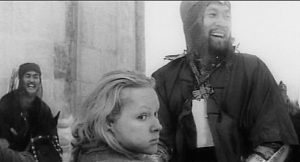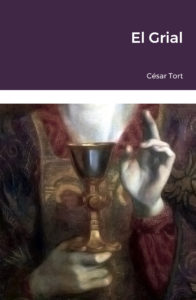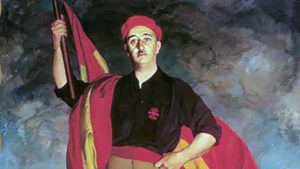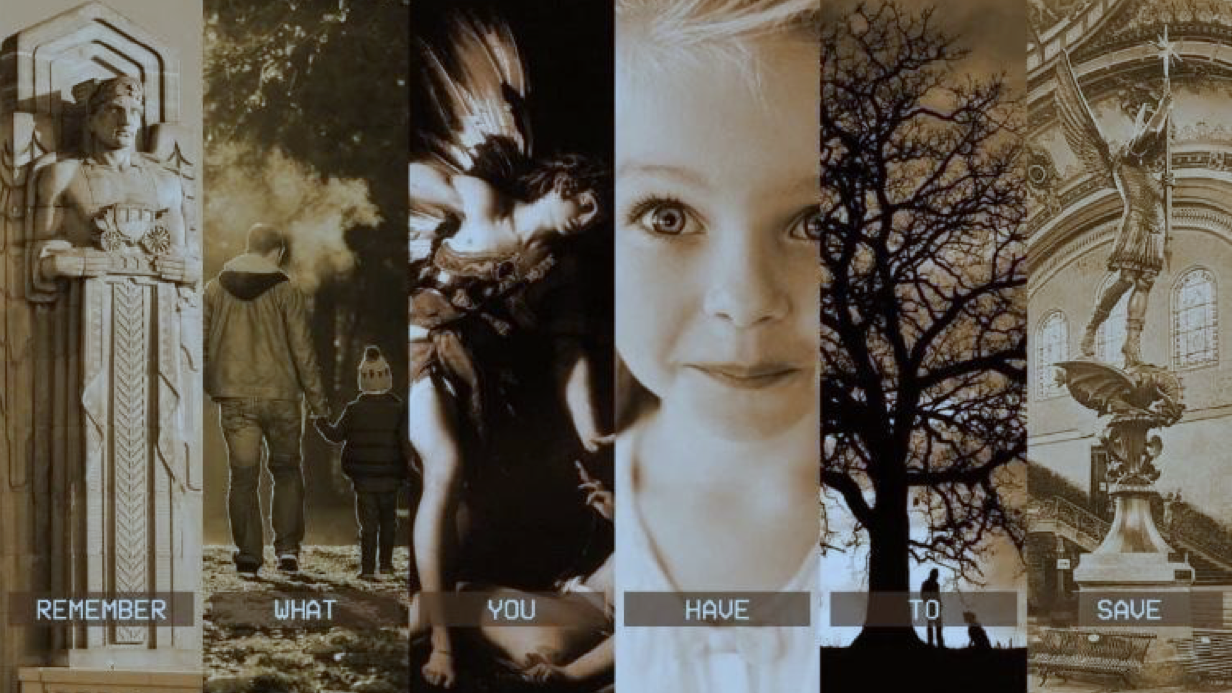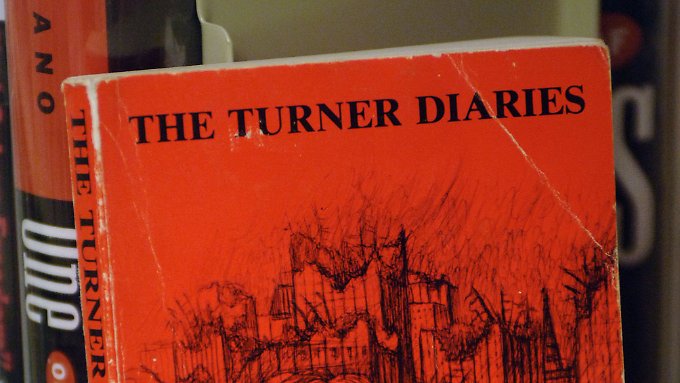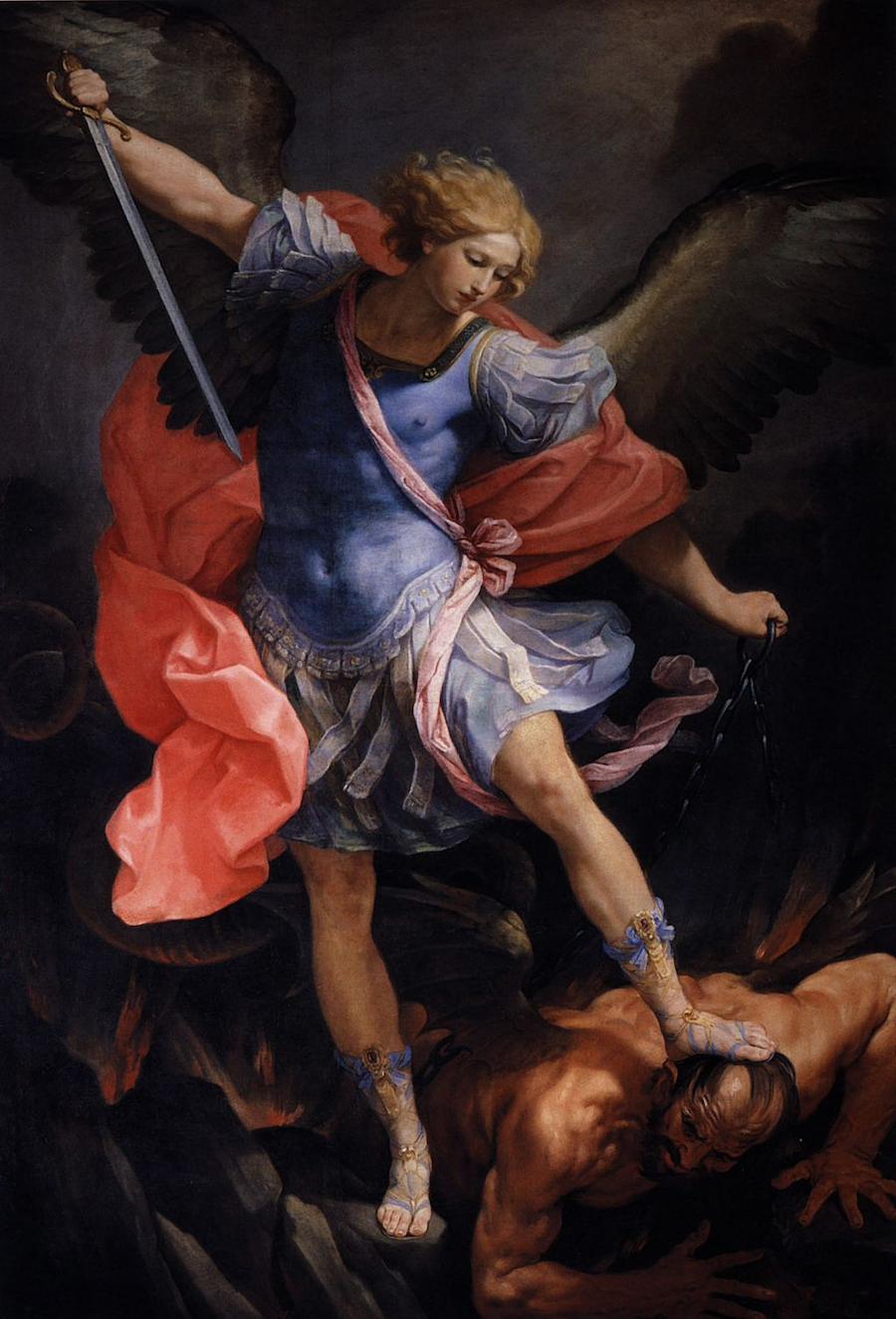The National Alliance and smaller
organizations (1970-1985)
By any imaginable standards, the National Socialist White People’s Party was the predominant NS organization in the United States throughout the 1970s and into the early 1980s. But it was not the only NS group. Except for the National Renaissance Party and NSDAP-AO, all of these other formations began as spin-offs or splinters of the NSWPP. For the most part, these other groups did not amount to much. Sometimes, the number of letters in their grandiose names exceeded the number of people they had on their mailing list. Nevertheless, they need to be included in any complete history of the NS movement in America – and three of these formations (the NA, the NSDAP-AO and the NSM) went on to play a significant role in the Movement after the end of the NSWPP.
In his 1968 essay, ‘Some Guidelines for the Development of the National Socialist Movement’ Matt Koehl noted: ‘Every dynamic force in history produces centrifugal tendencies. This has been true of the Christian church and the Marxist sects, as well as the National Socialist movement’. Professional Jewish ‘hate watcher’ Leonard Zeskind, comparing White Nationalism in America to an army, said that the movement consists solely of ‘generals and privates’ because as soon as a general promotes one of his privates to captain, the newly-minted captain declares himself to be a general and starts his army. There is certainly truth in the observations of both Koehl and Zeskind. Personality clashes differences, especially among the leaders, were the main reason that there were so many organizations all professing the same basic beliefs.
Here, listed alphabetically, is a roster of some of the NS-oriented formations active in the US during the 1970s.
- American Mobilizers (New York City)
- American Nazi Party (two different groups, one based in Hollywood, California, and the other in Phoenix, Arizona)
- American White Nationalist Party (Ohio)
- National Renaissance Party (greater NYC area)
- National Socialist League (San Francisco/Los Angeles)
- National Socialist Liberation Front (Los Angeles)
- National Socialist Movement (Ohio)
- National Socialist Party of America (Chicago)
- National Socialist Party of North Carolina
- National Socialist White Workers Party (San Francisco)
- National White People’s Party (North Carolina)
- National Youth Alliance (later the National Alliance)
- NSDAP-AO (Lincoln, Nebraska)
- United White Peoples Party (Cleveland)
- White Power Movement (West Virginia)
- White Youth Alliance (later the National Party, New Orleans)
This list is not inclusive, and other small groups came and went without leaving a mark on the political landscape.
These various organizations all shared a common ideology in a broad sense. Sometimes there were minor theoretical differences. The NWPP quibbled with the NSWPP over the inclusion of the word ‘socialist’; the NSL was a homosexual group, whereas all of the others were stridently anti-homosexual; the UWPP was openly Christian, while the NA and the NRP argued against Christianity.
But overall, all of the groups listed agreed on a certain body of core beliefs, namely:
- that the White race was superior to all other races and needed to be defended
- that the Jews were the enemy of all mankind and needed to be opposed
- that race-mixing was wrong
- that Blacks and other non-Whites (but especially Blacks) needed to be expelled from the US
- that communism was a creation of the Jews and was evil, and
- that the United States had fought on the wrong side during World War II, and it would have been better if Hitler had won the war.
It would be tedious and pointless to examine each of the organizations listed in detail, as most of them were insignificant, even by the modest standards of American National Socialism. But some among them do deserve discussion.
William Pierce and the National Youth Alliance
In 1968, Alabama Governor George Wallace mounted a presidential campaign as an independent candidate, opposing both the Republicans and the Democrats. Wallace presented himself as a disguised racialist, who would recapture the federal government from the traitors and ‘pointy-headed bureaucrats’ and reinstitute a White Constitutional republic.
It was all a lie: Wallace was just a two-bit political huckster bent on riding a massive wave of White discontent over the direction the country was heading. Nevertheless, his campaign released and focused on White resentment and anger as never before in the post-World War II era. In the November election, he won nearly 10 million popular votes and carried five southern states, totalling 46 electoral votes. Although Wallace himself was not a committed White racialist, probably 99 per cent of those who voted for him were Whites who had a positive sense of racial consciousness.
There were three different ways that American National Socialists reacted to the Wallace movement: Some, such as the NSWPP, denounced Wallace as the fraud that he was. Others ignored him as irrelevant to their efforts. But one man, at least, was shrewd enough to realize that the Wallace movement presented a unique opening for hardline racialists. That man was Willis Carto, whom we discussed in the sixth instalment of this series. Carto was a shrewd judge of human character, and he knew that Wallace was a false White Messiah. But he saw a wonderful opportunity to harness the tremendous racial energy that Wallace had unleashed.
Carto formed a student organization, ‘Youth for Wallace’ as an independent adjunct to the official Wallace movement. The goal was to amass a huge mailing list of young racially conscious White people who were attracted to the Wallace campaign and to use that mailing list for a post-electoral effort. And this he did.
Following the election, he transformed the YFW into a new organization, the National Youth Alliance. He recruited Dr Revilo Oliver to help him in the new enterprise. Carto had had a personal connection with the deceased neo-fascist ideologist Francis Parker Yockey and was the publisher of a popular edition of Yockey’s 1948 masterwork Imperium: The Philosophy of Politics and History. Because of this connection, Carto used Yockey’s thought as the ideological basis of the NYA. Yockey was not a racialist as we consider the term today: rather than racialism rooted in biological reality, he championed a wispy, insubstantial ‘spiritual’ racial ideology. Oliver was not especially enthusiastic about Yockeyism, but went along with it, later explaining that Yockey’s thought was ‘the best option open to us at the time’.
Carto’s NYA never went very far. He appointed Louis Byers as his frontman. Byers published one issue of a newspaper called Attack!, held a few meetings and distributed copies of Imperium. Within a year, the NYA was moribund.
As previously discussed, Dr William L. Pierce had split from the NSWPP in mid-1970, at the same time the nascent NYA was foundering. After the split, Pierce found himself at looses ends politically. He issued two multi-page public letters to the mailing list that he had accumulated. In the first letter, he gave his reasons for leaving the NSWPP. In the second, entitled Prospectus for a National Front he put forth his vision for a new American NS movement. He signed both letters ‘Heil Hitler!’ (see here).
In essence, what Pierce proposed was an organization that would retain basic National Socialist ideology but would be stripped of the external NS trappings that had characterized the movement since Rockwell formed the American Nazi Party in 1959: there would be no Swastikas, no uniforms, no glorification of Adolf Hitler and no fixation with National Socialist Germany. Serious political activism would replace the publicity stunts that Rockwell had used to propel himself into the headlines.
______ 卐 ______
Editor’s Note: See why a few days ago I wanted to read a history of American racialism? I was unaware of this precisely because I was reluctant to read the history of the Jew Leonard Zeskind, mentioned by Kerr above.
If I had known this little piece of info, I wouldn’t have romanticised Pierce as much as I did since 2010 until this year. It is clear that, on this point, Savitri Devi had a much deeper grasp than Pierce about how the collective unconscious works.
For example, keeping in mind what I said in my last post, had I known in my teens that there were two racist groups in the neighbouring country to the north, without any doubt I would have immediately chosen the one that was overtly NS: Matt Koehl’s (pic below)!
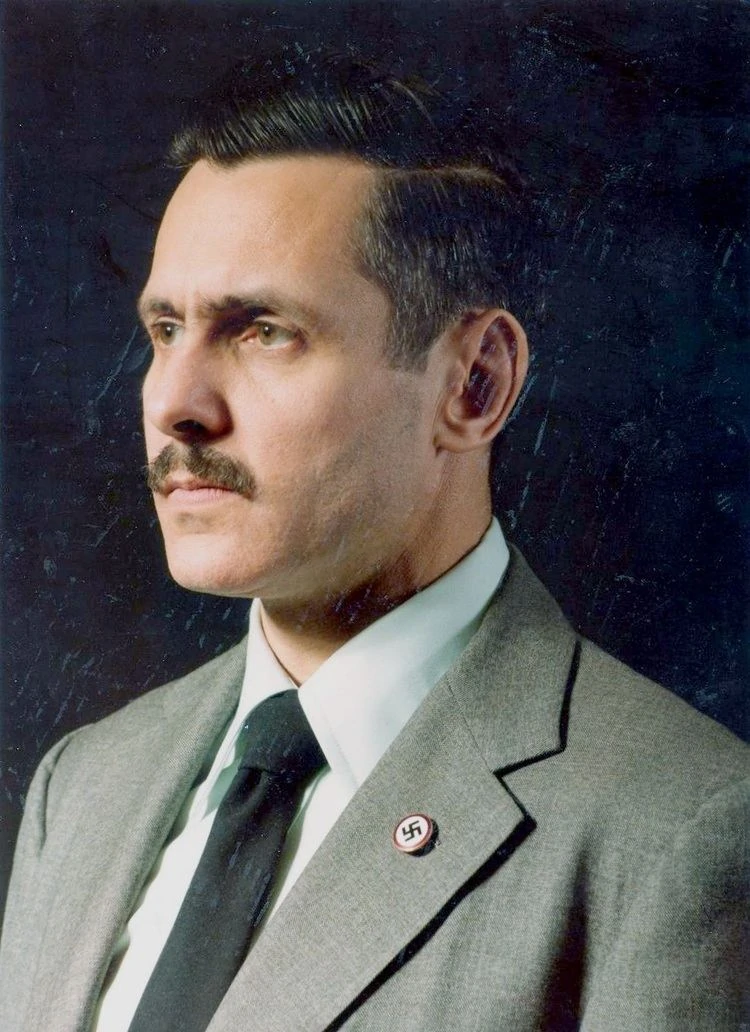 Now I see that it was Pierce who opened the first door to what since the mid-1990s John Gardner would start to call ‘white nationalism’: patriotard, tepid racialism that (unlike NS) is never going to amount to anything because it is incapable of, to use a Jungian term, making contact with the Self: the divine part at the core of the Aryan. This is so even taking into account that Pierce wasn’t lukewarm.
Now I see that it was Pierce who opened the first door to what since the mid-1990s John Gardner would start to call ‘white nationalism’: patriotard, tepid racialism that (unlike NS) is never going to amount to anything because it is incapable of, to use a Jungian term, making contact with the Self: the divine part at the core of the Aryan. This is so even taking into account that Pierce wasn’t lukewarm.
It doesn’t matter that Pierce tried to create a new religion (pace what Kerr says about ‘cosmotheism’ below). Without the central symbol of Hitler, deified as Savitri did it in her writings, it is impossible to replace the old religion (the Judeo-Christian poison) with the new one. It is impossible to transvalue values for the simple reason that what the Aryan needs are human models like Leonidas, Hermann and Hitler—instead of a mythical Jew from 1st century Palestine. A lot must be written about this in the future. For the moment, just remember Mauricio’s words quoted below the Roman sculpture, almost at the top of the sidebar. Kerr continues:
______ 卐 ______
Pierce’s letters met with a lukewarm response. Although people respected his intellect and his dedication, he had not yet proven himself as a leader. Few were ready to throw in with him in starting a new organization from scratch, especially since the NSWPP was flourishing.
At some point, Pierce sat down with the NYA’s Byers. He had given it his best shot, Byers said but had been unable to get the NYA off the ground, even after investing a substantial sum of Carto’s money and most of his savings into the venture. He offered the group to Pierce, if he wanted it, contingent on Carto’s approval. Pierce said that he was interested. Carto went along with the proposal, with the assumption that Pierce would just be another frontman as Byers had been, and that he, Carto, would call the shots from behind the scenes.
There was not a whole lot to turn over to Pierce. He received a mailing list of 15,000 names, most of which dated back to the Youth for Wallace group and were over two years old. But he also received Carto’s backing. Pierce produced the second issue of Attack! along the lines, he had discussed in his Prospectus. He jettisoned the Yockey angle and resurrected NYA as a group based on biological racialism. The tabloid was an immediate success. For a cost of $2,000, he received $6,000 back in the mail, and he could now separate the wheat from the chaff in the old NYA mailing list.
It was soon clear that Pierce had no intention of being a frontman for Carto. He was his own man and would run the NYA as he saw fit. Carto was outraged. There was a brief power struggle from which Pierce emerged victorious. By early 1971, Pierce had his group. Had he not taken over the NYA, Pierce would have doubtlessly gone on to form a new group of his own. However, with the resources of the NYA at his disposal, meagre though they may have been, he was able to move forward more rapidly than he would have otherwise.
The first NYA facility was in Washington DC, Georgetown neighbourhood. Today Georgetown is toney and upscale, but back in the early 1970s it was decidedly low-rent. A two-story brick building was provided to Pierce by Carto. On the ground floor was the Western Destiny Bookstore. The phrase Western Destiny was a nod to Yockey, whose acolytes called themselves ‘Destiny Thinkers’. Part of the stock came from the NSWPP’s George Lincoln Rockwell Bookstore, which had been run by Robert Lloyd. Lloyd had sided with Pierce in his split with Matt Koehl, and the contents of the bookstore came with him. The rest of the stock came from Carto’s own Noontide Press operation. Above the bookstore was Pierce’s office, where he produced Attack! and carried out routine administrative tasks for the Alliance. The bookstore was manned by Pierce’s first two followers, who had come over to him from the NSWPP.
______ 卐 ______
Editor’s note: So at least at the beginning, there had long been some founding stones for a future publishing house, which is what I was concerned about in my earlier comments on this series. Kerr continues:
______ 卐 ______
However, after he broke with Carto, Pierce lost use of the facility. He eventually relocated the NYA office to Crystal City, across the Potomac River in South Arlington. He would have different offices in Crystal City over the years, until he finally moved the operation (then greatly expanded) to Hillsboro, West Virginia, in August 1985.
The NYA presented itself to the public as an activist group, but the reality was that it had few activists. In the four years of its operations, two small, low-key picket-line demonstrations were its only organized public activities. In 1973, Pierce testified against Secretary of State nominee Henry Kissinger before the Senate Foreign Relations Committee. He stated that Kissinger, as a Jew would favour the interests of Israel over America. But for the most part, the NYA and Pierce kept a low profile.
Most of its energy and resources went into producing and distributing Attack! which quickly became a ‘must-read’ publication in pro-White circles. Although it had some agitational content, its strong point was thoughtful, in-depth essays by Pierce on a wide range of racial and societal topics. At first, Pierce had to write most of each issue himself. In time, however, he was able to attract other writers who were impressed with his intelligence, realism and seriousness. One of these young recruits was Mark Weber, who went on to become a leading revisionist historian and head of the Institute for Historical Review.
Another feature of Attack! was The Turner Diaries. This was a serialized novel, an episode of which appeared in each issue. Pierce used the format of an adventure story set shortly to present his ideas concerning race and revolution. In 1978, the episodes of this series were collected and published as a novel. The novel proved to be immensely popular and successful: hundreds of thousands of copies have been printed in several different editions, and for a while, it could even be found in mainstream bookstores across the US. This gave Pierce’s core message an audience far beyond the relatively small readership of Attack!
As the 1970s wore on, the premises on which the NYA were founded eroded. The upheaval and turmoil of the Vietnam War era subsided, and the dynamic radicalism of the 1960s gave way to a prosperous society based on conspicuous consumption. As noted, the NYA had been founded as a student organization with membership limited to those under 30 years of age. Pierce recognized that he needed to make some adjustments to fit the changing situation.
The National Alliance
In February 1974, the NYA was reorganized as the National Alliance. In May of that year, Pierce adopted the Life Rune as its symbol. In 1977, the Attack! newspaper was replaced by the National Vanguard tabloid. In May 1982, Pierce retired the tabloid format, which was designed for mass distribution, and relaunched National Vanguard as a magazine printed on glossy stock and aimed at a more select audience. With occasional interruptions, the print version of National Vanguard continued until 2009, at which time it was temporarily suspended. It exists today in an online format (here).
Although later it attracted enough followers to stage impressive public demonstrations, the NA, like the NYA before it, kept a low profile in its first years. In terms of recruitment, it focused on quality, rather than quantity. Unlike the NSWPP, which had a political focus, or the NSWPP’s successor organization, the New Order which defined itself in spiritual terms, the National Alliance was an educational organization. The content of National Vanguard reflected this. A sales division, National Vanguard Books was created; the NA’s extensive booklist was the envy of every pro-White group and even attracted attention from like-minded formations abroad. The simple list was replaced in 1984 by a magazine-format illustrated catalogue. In 1983, Pierce recruited Kevin Alfred Strom. Strom’s first major project was compiling and producing a huge, portfolio-sized volume called The Best of Attack and National Vanguard Tabloid.
Internally, Pierce continued to develop his movement’s ideology. In serialized fashion, like The Turner Diaries, he wrote a comprehensive history of the White race stretching from remote prehistory through the second half of the 20th century. It was called Who We Are.
Although he was a practical man, who kept his attention focused on the important tasks immediately before him in building the NA, he also had a reflective side to his personality. His reflections on Man and Race, and their place in the Universe (or Cosmos), resulted in Pierce founding Cosmotheism. This was the philosophical or spiritual dimension of the National Alliance worldview. Or perhaps it is better to say that it is Cosmotheism that is all-encompassing, and the NA is its political manifestation at this point in history. Although his focus on the NA and the challenges before it kept him from developing this new belief in-depth, he spent enough effort on it to author three short essays which serve as its basic texts: The Path (1977), On Living Things (1979) and On Society (1984).
As I have written before, if our Race survives the existential crises which now beset it, William Pierce will not be remembered by future generations as the author of The Turner Diaries, or even as the founder of the National Alliance, but rather as the man who first codified the Will of Nature as Cosmotheism.
In August 1985 – at roughly the same time that Matt Koehl moved the headquarters of the New Order to Milwaukee – Pierce relocated the national office of the NA to Hillsboro, West Virginia. Further discussion of the evolution of these two organizations in the late 1900s and early 2000s lies beyond the scope of this article.
National Socialist Party of America
Another split occurred in the NSWPP at roughly the same time that Pierce broke away. This led to the creation of the National Socialist Party of America, which lasted until 1980.
Frank Collin was the leader of the Chicago Unit of the NSWPP. He was half-Jewish: his father was Max Simon Collin (born Cohn), a German Jew who had been interned in the Dachau detention facility in the 1930s, before emigrating to the United States. Frank Collin’s mother was of Irish-Catholic descent. Collin concealed his Jewish heritage when he joined the NSWPP. In 1970, the NSWPP headquarters in Arlington received a tip concerning Collin’s father. National Organizer Robert Lloyd investigated the allegation by examining the pertinent immigration and birth records, which were available to the public. He determined that Collin was indeed half-Jewish.
Collin was asked by the NSWPP to step down as the Chicago leader, but he refused. This caused a split in the local group, with hardline party loyalists remaining with the NSWPP, and Collin and his followers breaking away to form the NSPA. Collin dishonestly told his members that he did not have any Jewish descent. Despite the hard evidence against him, his followers chose to believe him.
The NSPA was based in the Marquette Park neighbourhood on Chicago’s west side, where George Lincoln Rockwell had successfully organized White resistance to racial integration in 1966. The party headquarters was called Rockwell Hall, and the group enjoyed a high level of support among the area’s besieged White population. The NSPA occasionally ran candidates for public officer. In 1975, Collin standing for alderman received sixteen per cent of the vote. Although it was a tiny group with only a handful of members, it received massive nationwide publicity on two occasions.
The first of these was the ‘Skokie controversy’. The NSPA was told that it would be unable to use Marquette Park for its White Power rallies unless it posted a huge deposit with the city. The small group, with no base of financial support to speak of, was unable to raise the amount. Instead, it announced that it would march in Skokie, Illinois, a community with a large Jewish population, many of whom were reputed to be ‘Holocaust survivors’. When the city of Skokie prohibited the march, Collin took it to court for violating his First Amendment rights. The case wound through the court system, eventually finding its way to the Supreme Court. In the end, Collin was allowed to march in Skokie but declined to do so. The rally deposit for public parks required by Chicago was also struck down.
The NSPA also garnered major worldwide publicity for its participation in the Greensboro, North Carolina, shootout between Klansmen and National Socialists on one side, and members of a Marxist sect calling itself the Communist Workers Party on the other. The North Carolina chapter of the NSPA had originally been yet another NSWPP splinter group called the National Socialist Party of North Carolina. It was led by Harold Covington, a former NSWPP activist and staff member. In 1976 he merged his mini-party with the NSPA and was appointed ‘Deputy Party Leader’ by Collin.
The CWP had been agitating local Negroes against the Klan in the futile belief that this would make the Negroes support communism. A series of skirmishes between the Klan and their NSPA allies and the CWP culminated in a ‘Death to the Klan’ rally organized by the Reds in a Black neighbourhood of Greensboro. The CWP taunted the Klan, calling them cowards and it dared them to attend the rally to counter-protest.
The rally was held as scheduled on November 3, 1979. The Reds were startled when a caravan of cars containing twelve Klansmen and four NSPA members drove to the rally site. (Covington refused to go along, claiming that his life was ‘too important to risk’.) Recovering from their initial surprise, the Communists attacked the vehicles. The Klansmen and National Socialists left their cars and engaged in a brawl with the Marxists. At some point, the Reds pulled back and opened fire on the men from the convoy with handguns. One Klansman, Harold Flowers, was wounded by gunfire. The Klansmen and NS’ers then retrieved long guns from the trunks of their vehicles and returned fire, killing five of the Reds and wounding a dozen others.
Sixteen of the Klan/NS convoy were arrested for murder but were subsequently found not guilty. This was a good showing on the part of the NSPA, but it proved to be their last hurrah. In December 1979, Collin was expelled from his party after evidence was discovered by NSPA members proving that he was a paedophile who had molested young boys in the Rockwell Hall headquarters. This information was subsequently turned over to the police, who arrested Collin in January 1980. Upon conviction of the charges, he served three years in jail. He has since reinvented himself as ‘Francis Joseph’. a self-described neo-pagan and expert on Atlantis and similar subjects.
Covington briefly took over the NSPA. He ran what was left of the party from his Raleigh, North Carolina office rather than Rockwell Hall. Sometime in 1981 or 1982, he abandoned the party and moved to Ireland. Another NSPA officer, Michael Allen, took command before finally dissolving the group in the mid-1980s.
NSDAP/AO
The initials NSDAP/AO stand for Nationalsozialistische Deutsche Arbeiterpartei Aufbau- und Auslandsorganisation, which is German for National Socialist German Workers Party Development and Foreign Organization. Unlike the other groups listed here, the NSDAP/AO did not view the United States as its major field of operations; rather it was formed as a propaganda base for the German NS movement. Any open manifestation of National Socialism was strictly illegal in both West Germany and East Germany in the 1970s (as they remain so today in the reunited German state). The purpose of the NSDAP/AO was to produce hardline NS material in the US, which would then be smuggled into Germany.
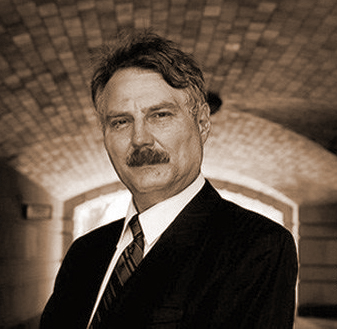 The NSDAP/AO was formed in 1973 by Gerhard Lauck, an American of German descent. Lauck, who was only 19 years old at the time, was encouraged in his efforts by former members of the German-American Bund. In March of that year he published the first issue of NS Kampruf (‘NS Battle Cry’), a German-language National Socialist publication. The NSDAP/AO also published leaflets, stickers and posters. It began with modest press runs of a few thousand, but within two years it was printing hundreds of thousands of pieces of material at a time.
The NSDAP/AO was formed in 1973 by Gerhard Lauck, an American of German descent. Lauck, who was only 19 years old at the time, was encouraged in his efforts by former members of the German-American Bund. In March of that year he published the first issue of NS Kampruf (‘NS Battle Cry’), a German-language National Socialist publication. The NSDAP/AO also published leaflets, stickers and posters. It began with modest press runs of a few thousand, but within two years it was printing hundreds of thousands of pieces of material at a time.
Sometimes this literature was mailed directly into Germany. However, because of interference by the German police, Lauck eventually developed a network that allowed him to send bulk shipments of material to countries bordering Germany where National Socialism was legal, such as Denmark. It was then smuggled across the border for distribution to underground NS cells.
In 1974, Lauck entered Germany for organizational purposes. He was ordered deported and eventually allowed himself to be arrested by the police.
Also in 1974, the NSDAP/AO began to involve itself in the American NS movement. Lauck initially tried to form a working relationship with Matt Koehl, who was the leader not only of the National Socialist White People’s Party but also of the World Union of National Socialists. WUNS had German and other European contacts. However, neither man fully trusted the other, and so Lauck cast about elsewhere for American allies. He eventually settled on an alliance with Frank Collin and his NSPA.
In April 1975, the NSDAP/AO issued its first English-language publication, the NS Report. Eventually, it was merged with Collin’s irregularly-published tabloid The New Order and adopted the other publication’s name. Lauck lent his political support to NSPA activities and attended some of them in person. In 1980, NSPA leader Collin was arrested for child molestation and was replaced by Harold Covington, who purchased the Rockwell Hall headquarter. Lauck soon broke with Covington and kept his distance from the American NS scene for the next two decades.
The NSDAP/AO continues its work to this day. In addition to English and German, it has expanded its operations to include material in over two-dozen languages. Its main website is: this.
National Socialist Movement and the National Socialist White Workers Party
The National Socialist Movement, which was alive and healthy in 2018, began in 1976 as a letterhead organization run by Robert Brannen and James Mason. The group conducted no activities, other than publishing a small photocopied newsletter. In April 1978, it merged with the National Socialist White Workers Party.
The NSWWP was an offshoot of the San Francisco Unit of the NSWPP. It was headed by Allen Vincent, an Old Fighter from the Rockwell years. The NSWPP in Northern California had been the subject of a documentary film that was nominated for an Academy Award in 1976, and which was later screened in Cannes. Vincent was the central figure in the film. After the film’s release, he broke with Matt Koehl and started his mini-party in the San Francisco bay area. It held occasional meetings and public activities and opened the Rudolf Hess Bookstore. The store was in a predominantly non-White area and was quickly stormed and destroyed by an angry mob. Vincent and his followers made a narrow escape out the back door.
At some point, both Brannen and Mason lost interest in the NSM/NSWWP. Brannen, the group’s chairman, turned it over to Clifford Herrington. Herrington had been in the NSWPP and a variety of splinter formations, and also ran his Satanic group called the ‘Joy of Satan’. In the 1990s, Herrington left the group and named Jeff Schoep as his successor. Surprisingly, Schoep proved an accomplished organizer and activist, and by 2000 he had made the NSM the largest and most-successful NS group in the US since the NSWPP was dissolved in 1983.
James Mason went on to form the Universal Order, another letterhead group, which combined traditional National Socialist doctrine with the teachings (such as they are) of the homicidal cult leader Charles Manson.
National Socialist Liberation Front
The NSLF was another NSWPP-breakaway, led by Joseph Tommasi. He had been the most impressive and successful of the NSWPP’s local leaders. He ran the Los Angeles Unit of the party out of a large Swastika-decorated farmhouse in the LA suburb of El Monte. Tommasi was a talented public speaker and organizer and had a charismatic personality. At a time when many NSWPP units struggled to raise a dozen men for local demonstrations, Tommasi could put 40 to 50 troopers in the street. By most political metrics, this is a pitifully small number, but by the low standards of post-War American National Socialism, it was noteworthy.
Unfortunately, Tommasi was impulsive, hot-headed and undisciplined. He viewed his NSWPP chapter as an independent NS franchise that he could run however he saw fit. Commander Matt Koehl, however, considered each local unit to be subordinate to the party’s national organization. Koehl repeatedly tried to bring Tommasi’s operation into line with the rest of the party, but the 22-year-old Tommasi was stubborn and refused to comply. In 1973, Koehl reluctantly removed Tommasi as the Los Angeles Unit leader. In March of 1974, Tommasi broke from the NSWPP to form the National Socialist Liberation Front.
The NSLF, supposedly, was committed to ‘building the National Socialist revolution through armed struggle’. Tommasi, however, was limited in how much-armed struggle he could undertake since the group was heavily infiltrated by the police from the moment of its inception. Instead, he allied with an anti-Castro Cuban group based in South El Monte. The Cubans would commit small acts of violence against local Marxist organizations, and by mutual arrangement the NSLF would publicly take the credit for them. Actual NSLF activities were largely limited to attacks on the NSWPP and its personnel, against which Tommasi continued to harbour a grudge.
On August 15, 1975, Tommasi was shot dead on the steps of his former NSWPP headquarters when a confrontation he initiated with two NSWPP security officers turned violent. One of the men later pled guilty to second-degree murder and was sentenced to six months in jail. Following Tommasi’s death, the NSLF was led by David Rust, but within a few years Rust found himself in prison on weapons charges. Periodic attempts were made to revive the group by James Mason, Karl Hand and others. None of these attempts was unsuccessful.
National Socialist League
The National Socialist League was an organization in Los Angeles and San Francisco for homosexuals. Homosexuals were not allowed in NS or related groups, which in fact, were vociferously anti-homosexual. Thus, the NSL was in a category of its own, seeking to combine National Socialism with ‘the struggle for sexual liberation’. The NSL was founded by Russell Raymond Veh, a former NSWPP activist who left the party after he belatedly discovered that it was hostile to his sexuality.
The NSL undertook no public activities. What its private activities were one can only imagine. It published a newsletter, initially called NS Kampfruf (no doubt plagiarized from Gerhard Lauck’s publication of the same name), but later changed to NS Mobilizer. The NSL lasted from the mid-1970s to the early 1980s.
We will not chronicle or document the other groups listed at the beginning of this article. With the notable exceptions of the NA, the NSDAP/AO and the NSM, these minor formations – some of them very minor indeed! – all tell the same story: A disgruntled NSWPP member declares himself to be the new Führer and proceeds to lead his corporal’s guard of followers into obscurity.
Taken together, these smaller groups cut a poor figure. Indeed, they hurt the overall prospects of American National Socialism by opening the movement up to ridicule, and by making it seem unappealing and unsavoury to disaffected Whites who might otherwise consider National Socialism in a positive light. Yet for good or for ill, they are part of the historical record.
